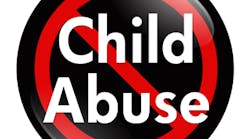April is National Child Abuse Prevention month. Children in trouble may be screaming for help; hear their silent cry. Be part of the solution, be aware, report. Please don’t ask "What if I’m wrong," ask "What if I’m right."
* * Editor’s Note: April is National Child Abuse & Prevention Month. However, this issue deserves our attention everyday throughout the year. Kudos Linda!
RELATED | Dental professionals are important allies against child abuse
References
1. Mouden LD, Bross DC. Legal issues affecting dentistry’s role in preventing child abuse and neglect. J Am Dent Assoc 1995;126:1173-80.
2. Tilden VP, Schmidt T A, Limandri B J, Chiodo G T Garland, M J, and Loveless P A. Factors that influence clinicians' assessment and management of family violence. Am J Public Health. 1994 April; 84(4): 628–633.
3. American Academy of Pediatrics Committee on Child Abuse and Neglect; American Academy of Pediatric Dentistry; American Academy of Pediatric Dentistry Council on Clinical Affairs. Guideline on oral and dental aspects of child abuse and neglect. Pediatr Dent. 2008-2009;30(Suppl):86-89.
4. Delta Dental P.A.N.D.A. MidAtlantic P.A.N.D.A. http://www.midatlanticpanda.org/.
5. https://www.theonlinelearningcenter.com/dental-continuing-education.aspx.
Internet resources
1. https://www.childwelfare.gov/.
2. http://www.childhelp-usa.com/.
3. http://www.childhelp.org/pages/hotline-home.
4. Philips Learning Center. https://www.theonlinelearningcenter.com/dental-continuing-education.aspx.
5. https://www.deltadentalmo.com/AboutUs/PANDA.
Linda Blackiston, RDH, BS, is a manager of Professional Education for Philips Oral Healthcare. She volunteers with Mid-Atlantic PANDA (Prevent and Abuse Neglect Through Dental Awareness) providing courses on recognizing and reporting cases of abuse and neglect. Linda serves on The Samaritan Women board of directors; which is a long-term restoration program for victims of human trafficking. She also volunteers educating the community on human trafficking issues.








